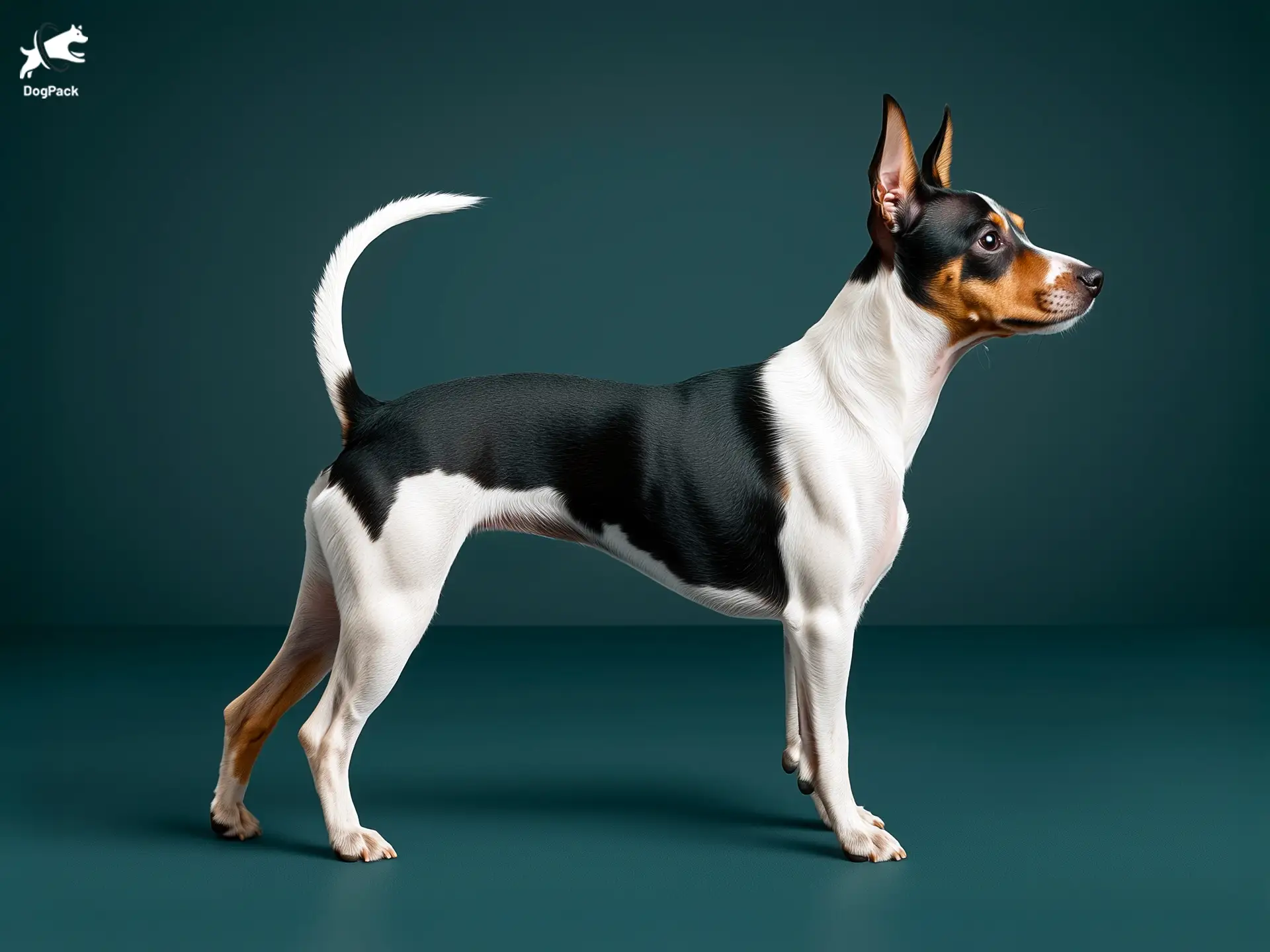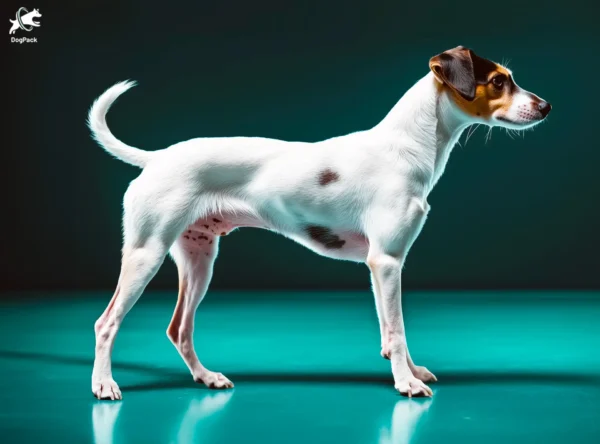Ratonero Murciano Dog Breed Info & Overview
It’s no secret that the Ratonero Murciano is a fascinating breed, prized for its lively spirit and skill at rodent control. This pint-sized Spanish wonder boasts an intriguing history and a loyal, affectionate nature. Thanks to its adaptable temperament and compact size, it suits families, active singles, and city dwellers alike.
Characteristics
Pictures
Breed History
The earliest roots of this agile little dog trace back to rural Spain, where farmers needed a fearless helper to keep barns free of rodents. Over time, local hunters and households admired its sharp instincts and enduring stamina. This capable ratter also became a beloved companion, thanks to its keen sense of duty and playful charm.
Historically, these dogs worked alongside laborers in fields and orchards, scaring off pests and protecting valuable crops. Their ability to adapt to changing roles made them more than just hunting or guard animals; they earned a place inside homes as cherished pets. Community tales and folklore consistently highlight their relentless courage in the face of vermin.
While not globally famous, the Ratonero Murciano has developed a devoted following within Spain. Enthusiasts credit centuries of careful breeding for preserving its trademark agility and tenacity. Today, it stands as a proud symbol of its region’s rich heritage, proving that a compact canine can wield plenty of spirit and heart.
Temperament, Personality
Spunky and warm-hearted, these little dogs seem eager to make friends at every turn. They have a natural curiosity that keeps them engaged, whether exploring a new backyard or investigating hidden corners of your living room. Known for their unwavering loyalty, they quickly form strong bonds with their favorite humans and thrive on close companionship.
Early socialization is key to helping them interact confidently with other pets and people. They tend to be watchful around strangers, occasionally letting out a bark or two if something seems amiss. Beneath their alert exterior, though, lies a gentle soul that craves affection, making them perfect for families who enjoy a lively yet loving companion.
The Ratonero Murciano balances energetic play with affectionate downtime. While they’re often up for chasing toys or running around the yard, they also love curling up in a lap when the excitement is over. Their willingness to please and sociable nature creates a harmonious dynamic, offering endless enjoyment for both first-time and experienced dog owners.
Physical Characteristics
Blessed with a lean, athletic physique, these dogs may appear small but carry themselves with surprising poise. Their short coat typically comes in white, black, or tan, sometimes adorned with distinctive markings. Muscular hindquarters and a graceful stride reveal their heritage as vermin catchers, enabling them to dart swiftly after rats or mice.
Their ears, often semi-erect or folded, enhance their vigilant expression, always ready to pinpoint the faintest rustle. Large, round eyes sparkle with inquisitiveness and reflect a hint of mischief, especially when they spot a chance to dig into something interesting. Despite their petite frame, they exhibit stamina that belies their size, allowing for active pursuits.
A healthy Ratonero Murciano stands between 14 and 16 inches at the shoulder, with a trim figure that seldom exceeds 20 pounds. This compact build makes them excellent for smaller living spaces, yet they’re robust enough for outdoor adventures. Their neat coat is relatively easy to maintain, emphasizing their low-maintenance appeal to busy families.
Health Issues
Although generally robust, these dogs can be prone to certain joint issues, such as patellar luxation. This condition occurs when the kneecap shifts out of place, sometimes leading to discomfort or lameness. Regular veterinary check-ups and early detection are crucial in managing any potential orthopedic problems, ensuring your pet stays spry and agile.
Another area to monitor is dental health, as smaller breeds often experience crowding or plaque buildup. Incorporating consistent tooth brushing and providing chew-friendly toys can help keep tartar at bay. Periodic professional cleanings may also be beneficial. Staying vigilant about their oral hygiene contributes to a more comfortable life and reduces the risk of infection.
The Ratonero Murciano may also encounter eye sensitivities, particularly if debris or dust accumulates due to its active lifestyle. Routine cleaning around the eyes helps prevent irritation. Overall, a balanced diet and moderate exercise support a healthy immune system, reducing the likelihood of more serious conditions over the dog’s lifespan.
Grooming Needs
Because of their short and sleek coat, weekly brushing typically suffices to remove loose hairs and maintain a neat appearance. It’s best to use a soft-bristle brush or grooming mitt, as harsher tools may irritate their skin. This quick grooming session also offers an opportunity to check for any bumps, scrapes, or hidden ticks.
Though they’re light shedders, they still benefit from a monthly bath, especially if they’ve been romping around dusty backyards or farmland. Use a gentle, canine-formulated shampoo to avoid stripping natural oils. Ensuring their ears remain clean and dry prevents bacterial buildup, while trimming nails every few weeks supports healthy paws and comfortable movement.
For Ratonero Murciano owners who want a more polished look, occasional trips to a professional groomer can help tidy up any unruly areas. However, this breed generally remains low-maintenance compared to long-haired counterparts. The key is consistency and a gentle approach, resulting in a clean, content pup with minimal fuss.
Exercise Requirements
Staying active is a must, as these spirited dogs enjoy a good romp whenever possible. Daily walks or play sessions, totaling at least 30 minutes, help burn off their abundant energy. Whether it’s a brisk lap around the neighborhood or a rousing game of fetch, they thrive when given a chance to stretch their legs.
Because of their rat-catching heritage, they love mental challenges just as much as physical ones. Engaging them with puzzle toys or scent-based activities can keep their minds sharp and ward off boredom. A bored pup may resort to digging or other mischievous behaviors, so varied exercise routines are essential for maintaining a balanced temperament.
If the Ratonero Murciano is in a household with ample outdoor space, it will happily patrol the perimeter for critters. Apartment living can also work, provided they receive regular outings for stimulation. They adapt remarkably well to different environments, as long as they have consistent opportunities to move and explore.
Training Tips
These clever canines respond well to positive reinforcement techniques, especially when rewarded with tasty treats and genuine praise. Building trust is crucial, so keep training sessions upbeat and fun. Short, frequent lessons ensure they stay focused, preventing boredom. Overly harsh methods might cause them to become timid or resistant, so a patient approach is recommended.
Introducing basic commands early helps them develop good manners, reducing the chance of undesirable habits like excessive barking or resource guarding. Consistency is key: use the same verbal cues and gestures so they understand what’s expected. Patience pays off, and you’ll likely find them a quick study, ready to tackle new tricks with enthusiasm.
A Ratonero Murciano may occasionally display a stubborn streak if it catches an enticing scent. In these moments, gentle redirection can refocus its attention. Above all, keep training sessions lively and positive, as this breed thrives on mental engagement and a sense of accomplishment. With time, they become eager and obedient companions.
Nutrition, Diet
These agile hunters flourish on a diet rich in lean proteins, aligning with their active nature. Offering about half a cup to one cup of premium dry dog food per day, split into two meals, can help stabilize energy. Aim for formulas containing at least 25% protein, ensuring muscle maintenance and fueling their sharp hunting instincts.
Look for brands that specifically cater to small, energetic breeds, emphasizing whole meats like chicken or fish as the primary ingredient. Steer clear of fillers and artificial additives that might trigger sensitivities. Including occasional wet food or lightly cooked vegetables provides variety and beneficial nutrients. Always measure portions to avoid overfeeding this compact body type.
If your Ratonero Murciano engages in rigorous outdoor play, consider slightly increasing protein or healthy fats for sustained stamina. Monitor weight regularly to prevent obesity, which can stress joints. A well-balanced meal plan, tailored to their energy needs, keeps them agile, vibrant, and ready to chase down any rodent that dares cross their path.
Adoption, Breeders
Finding this unique breed outside Spain can be a challenge, but dedicated enthusiasts often connect through local clubs and specialized rescue groups. Reputable breeders prioritize health testing, ensuring pups free from serious conditions. It’s essential to request documentation of genetic screenings before committing, so you’re confident you’re welcoming a healthy companion into your home.
For more details on the breed’s standards and recognized breeders, consult the Real Sociedad Canina de España or explore listings on Adoptapet.com. These platforms can point you toward ethical sources that emphasize responsible breeding practices. Avoid quick, low-priced deals, as they may be linked to puppy mills or fraudulent advertisers.
When adopting a Ratonero Murciano, prepare to answer questions about your lifestyle and experience. Genuine rescues or breeders aim to match pups with suitable homes for a happy outcome. If you live abroad, consider working with transport services that prioritize canine welfare, ensuring your new friend arrives safe and stress-free.
Family Pet?
Small yet spirited, these dogs often mesh seamlessly with family life, offering bursts of playfulness balanced by heartwarming devotion. They’re known to be patient around older children who understand gentle handling. Because of their watchful nature, they can act as a mini guard dog, alerting you to unusual sounds or sudden visitors.
Introducing them to very young kids requires adult supervision, mainly due to the breed’s energetic disposition. Their sharp hearing and inquisitive spirit can sometimes make them skittish, so teaching children to approach respectfully fosters a positive bond. Once comfortable, they often prove themselves eager to chase a ball or cuddle on the couch.
A Ratonero Murciano generally coexists well with other pets, including cats, if introduced slowly and correctly. Their hunting instincts might activate when faced with smaller animals, so vigilance is essential. Still, many households report harmonious multi-pet environments once boundaries are established. With patience, this breed thrives as a truly interactive family member.
Right For You?
Before bringing one home, consider how much daily enrichment you can provide. These dogs excel in busy households where someone is available to share playtime or teach new tricks. If you relish an upbeat canine that keeps you on your toes, you’ll find them endlessly entertaining and eager to engage.
For those leading a laid-back lifestyle with limited time for exercise, this breed’s energy might be overwhelming. They crave stimulation, both mentally and physically, and can become restless without enough outlets for their curiosity. Apartment dwellers may still succeed, provided they commit to regular walks and opportunities for exploration.
A Ratonero Murciano suits anyone prepared to meet its demands for attention, training, and social activity. Whether you’re single, part of a couple, or have an entire family, the key is a dynamic environment that celebrates this pup’s zest for life. In return, you’ll gain a devoted friend bursting with personality.
Conclusion
Enthusiastic and endearing, this spirited Spanish ratter can thrive in a wide range of homes, provided its owners meet its energetic and social needs. With a past deeply rooted in vermin control, it retains a keen mind that relishes both mental and physical challenges. By investing in proper training, health care, and plenty of bonding time, you’ll set the stage for a truly rewarding companionship. Though it remains relatively unknown beyond its native region, the Ratonero Murciano stands out for its lively temperament and unwavering loyalty. Whether you live in a countryside villa or a city apartment, this pint-sized dynamo is ready to make itself at home—bringing loads of charm and devotion along the way.
FAQs
-
What makes the Ratonero Murciano different from other rat-hunting breeds?
The Ratonero Murciano is smaller and more agile than other ratting dogs like the Jack Russell Terrier. It is known for its sharp reflexes, incredible vertical jumps, and fearless nature, making it a highly efficient vermin hunter, especially in Murcia’s orchards and rural farms.
-
Is the Ratonero Murciano a rare breed outside of Spain?
Yes, the Ratonero Murciano is extremely rare outside of Spain and is mainly found in Murcia and neighboring regions. Unlike the Ratonero Bodeguero Andaluz, which has gained some international recognition, this breed remains largely unknown outside its homeland, with limited breeding programs abroad.
-
How does the Ratonero Murciano behave around children?
This breed is affectionate and energetic, making it a great companion for active families. However, due to its strong prey drive and high energy, it may not tolerate rough handling from very young children. Early socialization helps the Ratonero Murciano become a well-behaved and patient family member.
-
Does the Ratonero Murciano have strong guarding instincts?
Despite its small size, the Ratonero Murciano is highly alert and has natural watchdog instincts. It will quickly sound the alarm if it detects anything unusual. However, it is not aggressive and is more likely to intimidate intruders through persistent barking rather than physical confrontation.
-
What types of activities does the Ratonero Murciano excel in?
In addition to vermin control, this breed thrives in agility sports, scent detection games, and obedience training. Its athleticism and quick thinking make it an ideal candidate for dog sports or interactive play sessions that engage its hunting instincts and problem-solving skills.
Breed Ratings
Quick-witted and eager to learn, the Ratonero Murciano excels at problem-solving tasks, easily mastering new commands with positive training.
Enthusiastic by nature, they relish energetic games, fetch sessions, and playful antics, keeping everyone entertained at home.
Active and spirited, they thrive on regular walks and interactive toys, though they also enjoy downtime once their energy is spent.
A short coat limits shedding, but regular brushing helps control stray hairs and keeps them looking sleek and well-groomed.
Bred to hunt rodents, they retain a strong chase instinct, so close supervision around small animals is crucial.
Their short coat requires minimal effort, with weekly brushing and occasional baths keeping them fresh and comfortable.
Eager to please and food-motivated, they pick up commands quickly, though gentle persistence is needed to curb any stubborn streak.
They form strong bonds and may become anxious if left for extended periods, requiring gradual training for solo time.
Alert by nature, they’ll bark at unusual sounds, but consistent training keeps vocal outbursts under control.
Rarely drooling, they maintain a neat appearance, making them a tidy choice for owners who prefer minimal mess.
Generally sociable, they adapt well to canine companions, provided early introductions and positive experiences are offered.
Hardy overall, but watch for joint and dental issues; routine vet check-ups help maintain a healthy, thriving companion.













